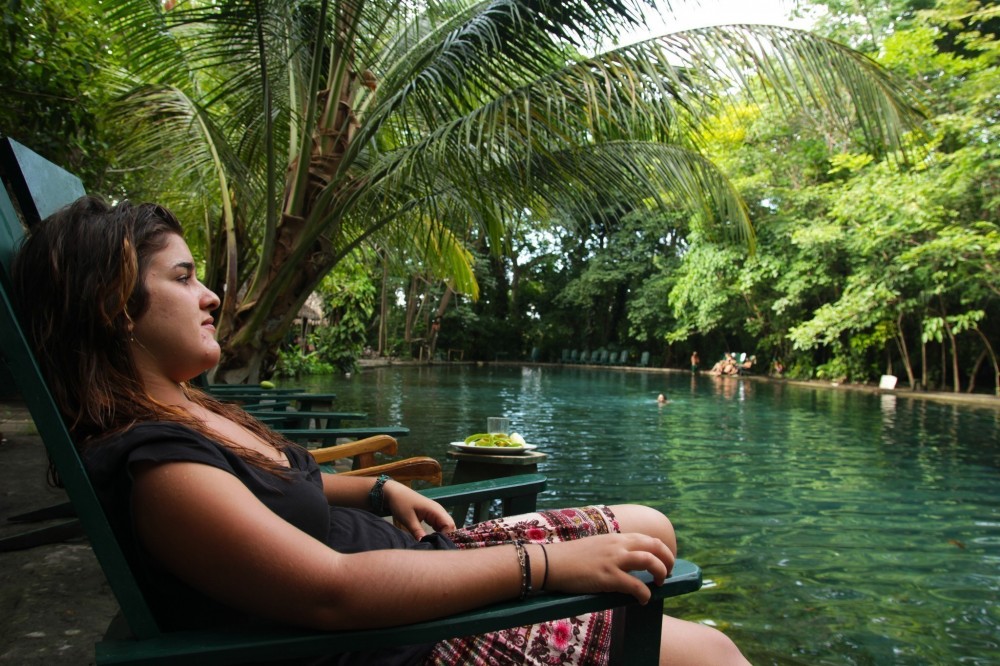Ojo De Agua: The Hidden Oasis In The Heart Of Nature
Imagine stumbling upon a pristine natural spring nestled deep within the earth, where crystal-clear water bubbles up from the ground, surrounded by lush greenery and serene landscapes. This is the essence of Ojo de Agua, a breathtaking natural wonder that has captivated the hearts of travelers and nature enthusiasts alike. Ojo de Agua, often referred to as a natural eye of water, is more than just a destination; it's an experience that connects you with the raw beauty of the earth.
Ojo de Agua is not only a stunning natural attraction but also a significant ecological and cultural landmark. These natural springs are found in various parts of the world, each with its own unique characteristics and stories. As we delve deeper into the world of Ojo de Agua, we will uncover the mysteries, benefits, and importance of these natural treasures.
Whether you're a nature lover, an adventure seeker, or simply someone who appreciates the beauty of the natural world, Ojo de Agua offers something for everyone. From its ecological significance to its role in local communities, this article will guide you through everything you need to know about these remarkable natural springs.
Read also:Maria Brink Age Discovering The Life And Legacy Of The Iconic In This Moment Vocalist
Table of Contents
- What is Ojo de Agua?
- Types of Ojo de Agua
- Ecological Significance of Ojo de Agua
- Benefits of Ojo de Agua to Local Communities
- Popular Locations of Ojo de Agua
- Conservation Efforts for Ojo de Agua
- Health Benefits of Ojo de Agua
- Impact of Tourism on Ojo de Agua
- Cultural Importance of Ojo de Agua
- Future Prospects for Ojo de Agua
What is Ojo de Agua?
Ojo de Agua, which translates to "Eye of Water" in English, refers to a natural spring that emerges from the ground, often forming a small pool or pond. These springs are typically fed by underground aquifers, creating a continuous flow of fresh, clean water. The name "Ojo de Agua" is inspired by the circular shape of the spring, resembling an eye surrounded by water.
Characteristics of Ojo de Agua
Each Ojo de Agua has its own unique characteristics, depending on its location and geological conditions. Some key features include:
- Crystal-clear water: The water in Ojo de Agua is usually exceptionally clear, making it a popular spot for swimming and relaxation.
- Natural surroundings: These springs are often surrounded by lush vegetation, creating a serene and picturesque environment.
- Temperature: The water temperature in Ojo de Agua can vary, but it is often cool and refreshing, especially in warmer climates.
Types of Ojo de Agua
There are several types of Ojo de Agua, each with its own distinct features and characteristics. Understanding these types can help us appreciate the diversity of these natural wonders.
Hot Springs
Some Ojo de Agua are geothermal in nature, meaning they are heated by underground volcanic activity. These hot springs are known for their therapeutic properties and are popular destinations for relaxation and wellness.
Cold Springs
On the other hand, cold springs are fed by groundwater that remains at a constant temperature year-round. These springs are ideal for swimming and are often used as natural swimming pools.
Ecological Significance of Ojo de Agua
Ojo de Agua plays a crucial role in maintaining ecological balance. These natural springs provide habitat for a variety of plant and animal species, many of which are unique to these ecosystems.
Read also:Ynw Melly Birthday Celebrating The Life And Music Of A Rising Star
According to a study published in the Journal of Ecology, Ojo de Agua ecosystems support a high level of biodiversity, with many species depending on these springs for survival. Protecting these ecosystems is essential for preserving the delicate balance of nature.
Benefits of Ojo de Agua to Local Communities
Beyond their ecological significance, Ojo de Agua also provide numerous benefits to local communities. These springs are often used as a source of drinking water, irrigation, and even as a place for social gatherings.
In many rural areas, Ojo de Agua serves as a vital resource for agriculture, supporting local economies and livelihoods. Additionally, these springs attract tourists, bringing in revenue and creating job opportunities for the community.
Popular Locations of Ojo de Agua
Ojo de Agua can be found in various parts of the world, each offering its own unique experience. Some of the most popular locations include:
- Ojo de Agua de Los Sabinos (Mexico): Located in the state of Nuevo Leon, this natural spring is renowned for its clear blue waters and surrounding greenery.
- Ojo de Agua de San Marcos (El Salvador): Known for its thermal waters, this spring is a popular destination for those seeking relaxation and healing.
- Ojo de Agua de San Ignacio (Argentina): Situated in the province of Misiones, this spring is surrounded by lush rainforests and offers a tranquil escape from the hustle and bustle of city life.
Conservation Efforts for Ojo de Agua
Due to their ecological and cultural importance, conservation efforts are crucial for the protection of Ojo de Agua. Organizations such as the World Wildlife Fund (WWF) and local environmental groups are working tirelessly to preserve these natural wonders.
Some of the key conservation strategies include:
- Water management: Implementing sustainable water management practices to ensure the long-term health of Ojo de Agua ecosystems.
- Community involvement: Engaging local communities in conservation efforts to promote awareness and responsibility.
- Protected areas: Establishing protected areas around Ojo de Agua to safeguard these ecosystems from human activities that could harm them.
Health Benefits of Ojo de Agua
Beyond their ecological and cultural significance, Ojo de Agua also offer numerous health benefits. The mineral-rich waters of these springs are known for their therapeutic properties, which can help alleviate a variety of ailments.
According to the International Journal of Environmental Research and Public Health, soaking in Ojo de Agua can improve circulation, reduce stress, and enhance overall well-being. Additionally, the fresh, clean water is a great source of hydration and essential minerals.
Impact of Tourism on Ojo de Agua
While tourism can bring economic benefits to local communities, it can also have a negative impact on Ojo de Agua ecosystems if not managed properly. Increased foot traffic, littering, and pollution can harm these delicate environments.
To mitigate these effects, responsible tourism practices are essential. Tour operators and visitors alike should adhere to guidelines that promote sustainability and respect for the natural environment.
Cultural Importance of Ojo de Agua
Ojo de Agua holds significant cultural value in many communities around the world. These springs are often considered sacred sites, with deep spiritual and cultural meanings. In some cultures, Ojo de Agua is believed to have healing powers and is used in traditional ceremonies and rituals.
For example, in certain indigenous communities in Latin America, Ojo de Agua is seen as a connection to the spiritual world and is revered as a source of life and renewal.
Future Prospects for Ojo de Agua
As awareness of the importance of Ojo de Agua continues to grow, so too does the potential for these natural wonders to be preserved and celebrated. Advances in technology and increased global cooperation can help ensure the long-term health and sustainability of these ecosystems.
Looking ahead, it is crucial that we continue to prioritize conservation efforts and responsible tourism practices to protect Ojo de Agua for future generations. By doing so, we can ensure that these natural treasures continue to inspire and connect us with the beauty of the natural world.
Conclusion
Ojo de Agua represents the perfect blend of natural beauty, ecological significance, and cultural importance. From their crystal-clear waters to their role in supporting local communities, these natural springs offer something for everyone. As we have explored in this article, understanding and appreciating Ojo de Agua is essential for their preservation and the well-being of our planet.
We invite you to share your thoughts and experiences with Ojo de Agua in the comments below. Additionally, consider exploring other articles on our site to learn more about the wonders of the natural world. Together, we can make a difference in protecting these precious resources for generations to come.


